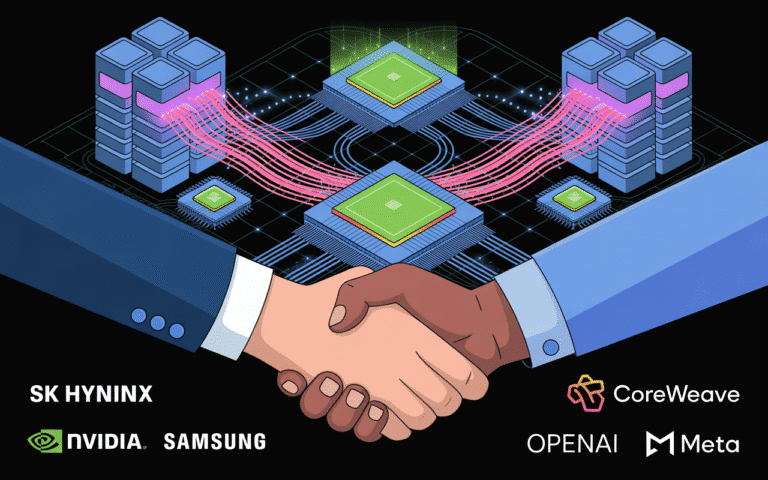Major Investments and Strategic Alliances Propel Global AI Infrastructure Forward

The landscape of artificial intelligence is evolving at an unprecedented pace, driven by an insatiable demand for computational power, high-bandwidth memory, and robust data center infrastructure. At the forefront of this revolution are some of the world’s leading technology companies, who are not just innovating in AI models but are also making monumental investments and forging strategic alliances to build the very backbone upon which future AI will operate. This global push is transforming the tech sector, laying down the critical infrastructure required for the next generation of intelligent systems.
The AI Arms Race: Billions Poured into Infrastructure
The development and deployment of sophisticated AI models, from large language models to complex generative AI, demand an immense amount of processing capability. This has sparked what can only be described as an ‘AI arms race,’ where companies are pouring billions into securing and expanding the necessary hardware infrastructure.
Giants like Nvidia, a dominant force in the GPU market, are not only producing the crucial chips but are also strategically partnering to ensure their GPUs are accessible to AI developers. Nvidia’s collaborations, such as with CoreWeave, highlight a trend where specialized cloud providers are emerging to offer scalable, GPU-accelerated computing infrastructure tailored for AI workloads.
Crucially, the performance of AI chips heavily relies on advanced memory solutions. This is where companies like Samsung and SK Hynix come into play. Both are making multi-billion dollar investments to ramp up production of High Bandwidth Memory (HBM), a critical component for AI accelerators. These investments are not just about meeting current demand but are proactive steps to secure their positions as indispensable suppliers in the burgeoning AI ecosystem. Their efforts ensure the continuous supply of cutting-edge memory, vital for training ever-larger AI models efficiently.
Furthermore, cloud infrastructure providers specializing in AI, such as CoreWeave, are raising significant capital to build and expand their data centers. Their business model is built around providing dedicated, high-performance computing resources, often in close partnership with hardware manufacturers like Nvidia, thereby democratizing access to powerful AI compute for a wider range of developers and enterprises.
Strategic Alliances: The Power of Collaboration
Building and maintaining cutting-edge AI infrastructure is a complex and capital-intensive endeavor, often too large for any single entity to manage alone. This reality is driving an era of unprecedented strategic alliances, where tech titans are collaborating to accelerate development and consolidate market positions.
A prime example is the intense competition and collaboration around supplying chips to leading AI research organizations. The demand for advanced semiconductors from entities like OpenAI, creators of ChatGPT, is immense. Securing consistent access to these high-performance chips requires deep strategic agreements with manufacturers and cloud providers, ensuring OpenAI can continue to train and refine its groundbreaking models.
Similarly, tech behemoths like Meta are heavily investing in their own AI capabilities, from research to product integration. These initiatives often involve intricate agreements for hardware procurement, data infrastructure, and sometimes even shared research efforts. Such alliances not only secure vital resources but also foster innovation by pooling expertise and sharing risks, ultimately accelerating the pace of AI advancement across the industry.
These partnerships extend beyond mere transactions; they often involve co-development, preferential access, and long-term commitments that reshape supply chains and influence future technological roadmaps. They underscore a collective understanding that the future of AI hinges on robust, collaborative infrastructure.
The Impact on Global Tech Landscape
The scale of these investments and the depth of these alliances are profoundly impacting the global technology landscape:
- Accelerated AI Development: With more powerful and accessible infrastructure, the pace of AI research and deployment will only intensify, leading to more sophisticated applications and capabilities.
- Economic Transformation: The AI infrastructure boom is creating new jobs, stimulating economic growth, and driving R&D spending across various sectors.
- Supply Chain Pressure: The surging demand for advanced chips, especially HBM, puts significant pressure on semiconductor manufacturers and raw material suppliers, highlighting the critical importance of resilient supply chains.
- Geopolitical Implications: Control over AI infrastructure and advanced semiconductor manufacturing is becoming a key strategic asset for nations, leading to increased geopolitical competition and policy focus.
In conclusion, the multi-billion dollar investments and strategic alliances being forged by companies like Samsung, SK Hynix, CoreWeave, and Nvidia are not just business transactions; they are the foundational efforts powering the global artificial intelligence revolution. These moves are securing the necessary computational muscle for AI to flourish, driving innovation, and charting the course for the next era of technological progress. The future of AI is being built today, brick by digital brick, through these monumental collaborative efforts.


